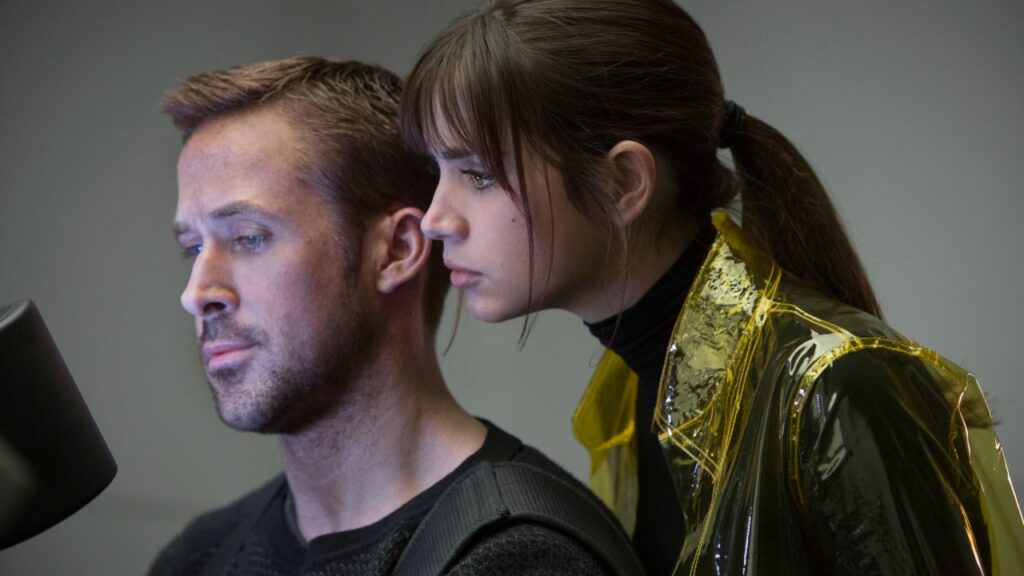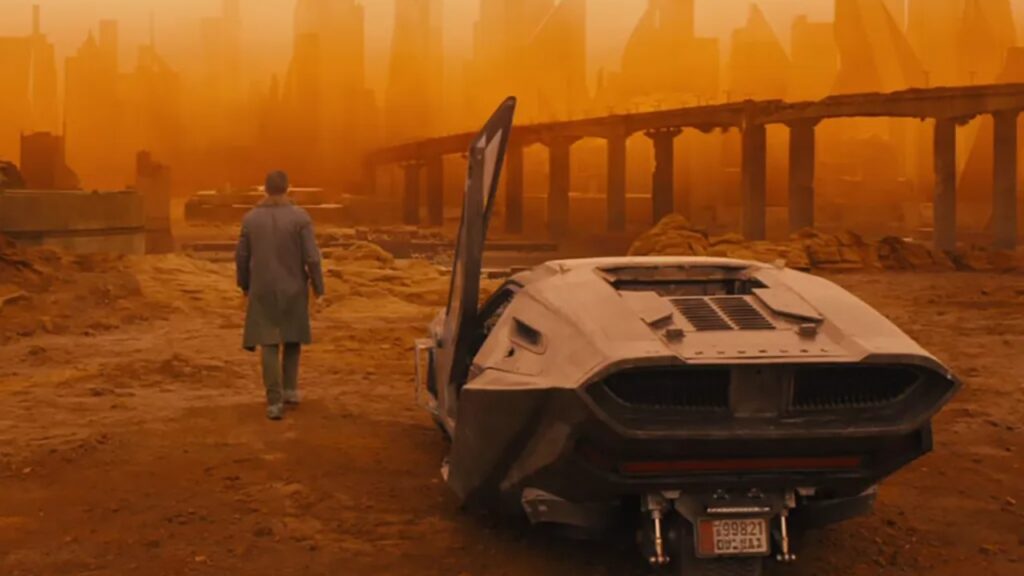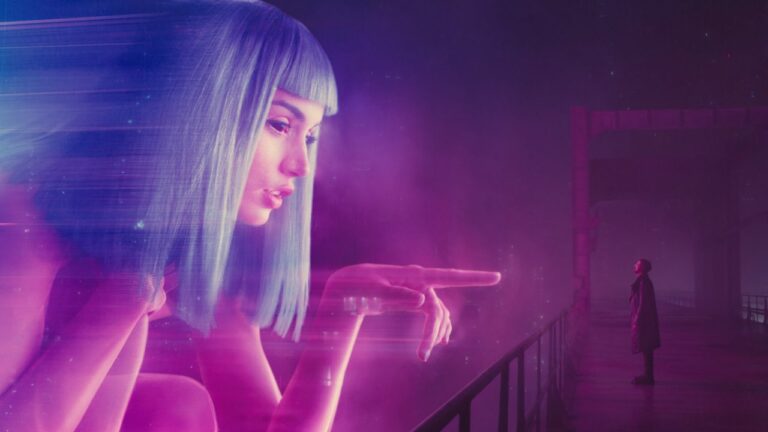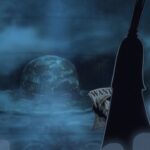When Denis Villeneuve took on ‘Blade Runner 2049,’ he made sure that he was stepping into the shadow of a film that had redefined science fiction in 1982. Ridley Scott’s ‘Blade Runner‘ left all of us with questions about identity, memory, and what it means to be human. Thirty-five years later, we see its sequel, which does more than just continue the story, as it deepens the mystery and expands the universe into something vast, unsettling, and strangely intimate.
Set three decades after the original Blade Runner, the film follows Officer K (Ryan Gosling), who is a replicant employed by the LAPD to track down older, rogue models. His work is clinical and obedient until one assignment leads him to a discovery that could fracture the fragile balance between humans and replicants. The discovery of evidence that a replicant, who once gave birth, and that possibility, which was previously unthinkable, sets him on a search for the child. Eventually, he finds his way towards Rick Deckard (Harrison Ford), the blade runner who disappeared after fleeing with Rachael at the end of the first film.
K’s Search for Meaning in a World of Ruins and Illusions

On the surface, Blade Runner 2049 plays like a noir detective story, with a lone figure sifting through fragments of truth in a crumbling world. Beneath its plot lies something more unsettling, as we see how Villeneuve’s lenses show us K’s memory, identity, and the possibility of finding meaning in an artificial existence. K’s journey mirrors Deckard’s, but with one crucial difference. While Deckard sought survival, K discovers a sense of purpose in sacrifice, allowing someone else to live freely.
The film excels at making its philosophical ideas feel tangible. Memories, real or fabricated, are central to the narrative. For K, the implanted recollections of a childhood birthday become a tormenting clue that he might be the “miracle child.” For us, well, it is a reminder that even false memories shape who we are. In one of the film’s most climactic turns, the memory artist Ana Stelline, working in her glass chamber, underscores the theme, and we see that what matters is not whether memories are authentic, but how they give life its texture.
Visually, the film is staggering. Roger Deakins’ cinematography portrays a world that is both overwhelming and intimate. Neon-lit cityscapes stretch endlessly, but the camera pauses on quiet moments such as the flicker of a hologram, dust hanging in abandoned casinos, or snow falling gently on K’s face.
This is a future collapsing under its own weight, where progress has left only silence, ruins, and the hum of machines. The score by Hans Zimmer and Benjamin Wallfisch pushes the atmosphere further, balancing industrial rumble with moments of aching stillness.
A Sequel That Honors the Original While Finding Its Own Voice

For all its grandeur, the film resists offering easy answers. Deckard’s own identity remains uncertain, resonating with the ambiguity of the original. Yet the sequel does push the conversation forward. If replicants can love, suffer, and even create life, then the line between human and machine no longer matters. What counts is choice, connection, and the meaning found in fleeting moments.
Blade Runner 2049 is not merely a continuation of a beloved film but a companion piece. Why? Because it honors the spirit of the original while carving out its own voice, one that persists quietly, even after the film has disappeared into silence.




